Phantasy Star Portable Review
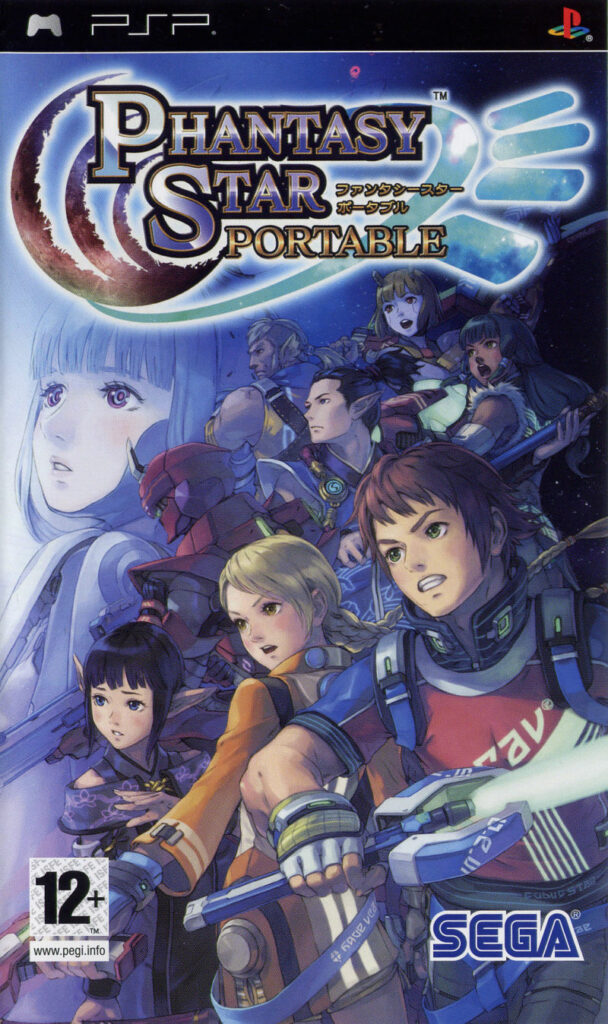
Action packed sci-fi fantasy roleplaying game with excellent co-op multiplayer.
Story
The infestation of the alien organism called SEED was thought to be under control after a long and hard struggle. But now, a new menace has stricken the Gurhal system. As the research teams start to investigate the remnant SEED contamination and clearing out the affected wildlife, new horrible discoveries will unfold.
The Game
Phantasy Star Portable is the first Phantasy Star title released on the PSP. It is based on the Playstation 2 game Phantasy Star Universe that was released in 2006, and it continues the storyline from there.
Phantasy Star Portable is thus an action based roleplaying game set in a high-tech science fiction fantasy universe. You, as an adventurer are to take on numerous missions and battle monsters in order to find better equipment and build up your character – and eventually make the world a better place by protecting the innocent and fighting the SEED. The game is mostly played from a third-person camera view and it has a focus on real-time combat and cooperative multiplayer missions.
Content
When the game starts you’re prompted to create your own avatar character, or, if you have played the downloadable demo version you can import your character from there. You can choose from four different races; Human, Newman, Beast or CAST (CASTs are an android type artificial life form).
The character customization goes to great lengths in that it has numerous options for face-types, hair-types and colors for your avatar. It is sure to satisfy even the most picky roleplayers.
Depending on what race you choose to play as you will be more or less able to fulfill certain roles in combat – for example, the Newman are best suited to become spell casters, while CASTs are highly skilled with guns and mechanical gear. You will also select a base class for your avatar and there are three such base classes; Ranger, Hunter and Force. This choice restricts which weapons you are proficient with, but your choice need not be final as you can change classes later in the game as you see fit.
The game is divided into two different parts, namely the Story- and Multi Mode. Story Mode is where the single-player campaign is at, and Multi Mode is the multiplayer mode. You can play which ever you want right from the start, and you can switch between the two at any time on the fly. Playing the Story Mode will allow you to take part of the story driven plot that takes you deeper into the mysteries of the game world. The campaign is a lengthy one, and it is mostly played with one or more AI controlled companion characters.
The Multi Mode is more open-ended – you can take on missions appropriate to your level with up to four players on either a local network or on the PlayStation Network Adhoc Party service.
In between missions you are in a quest hub, which is basically represented by a menu structure across a few different rooms, or locations rather. Here you are free to browse your inventory, upgrade equipment, buy new items and talk to NPCs. Talking is mostly a matter of reading through a series of text messages, but key conversations in the Story Mode has a whole lot of voice acted conversations too. Some of the talks are like mini tutorials integrated into the game. There are also occasions when you can select a response from a few different options, and this can have an impact on how the game progresses.
From the quest hub you can opt to take on optional bonus missions, and there are typically a few to choose from. These missions will be important if you want to maximize your characters abilities, because for each completed mission you will be ranked according to your performance, and through that you will earn Mission Points. When you earn enough Mission Points, your selected job will level up, making your character better at what they do.
In Story Mode you must sometimes go on an optional mission in order to trigger the next story event – but at least you are free to select which mission to do.
Once you embark on a mission you’ll see that the game sticks to the basic concept of killing monsters, navigating through an area, looking for loot, opening item boxes and battling boss monsters. Occasionally there are traps and puzzles, and in Multi Mode you’ll encounter puzzles that requires two, three or four players to simultaneously press buttons in order for doors to open. Obviously you won’t be able to go through those doors if you haven’t enough players in the game, but on the other hand, these doors only hold bonuses not required to beat the mission.
Killing monsters will reward you with experience points, and experience points will increase your character level. Not only does this make your character stronger, but it also decides what missions are open to you.
Typically each mission area has a series of locked doors, and in order to open them you need to find key cards. These keys are guarded by groups of monsters, so fighting is without a doubt in the center of the whole game. In its core, the missions aren’t very sophisticated or complicated, for better or for worse. It is all made up for thanks to the fact that fighting is addicting and very satisfying.
There are around 100 different monster types including huge boss monsters, spell casting types, robots, assassins and wild beasts. Some monsters have special abilities that sets them apart, but most of them seem to favor head-on combat.
The combat itself is very easy to manage and fun to be a part of. A series of close combat attacks will typically make your character advance automatically, but you can steer the direction of the advancement so that you can get the most out of your attacks.
Using healing- and stat-boosting items is done through a clever quick menu which you can customize with your most frequently used items. Switching between weapons is equally speedy and necessary to optimize your battle ability.
Using ranged weapons is also easy, much thanks to the generous hit boxes – even if your bullet doesn’t physically touch your target, it may still count as a hit, so there are some good margins there. This is good and needed because targeting enemies can be tricky at first – especially the fast ones.
When you’re surrounded by enemies, you’ll want to avoid having your back turned against them. Using the thumbstick to turn around quickly with any precision is hard and comes with a certain amount of risk. The natural solution to this is to walk backwards and use sidestepping rather than turn around. It may not be ideal, but it will eliminate the risk of losing sight of your targets.
There are almost 30 different weapon types that you can specialize in, and there are countless rare weapons and armors to be found. Each weapon can be enhanced with something called Photon Arts and each weapon type has its own unique set of Photon Arts. Photon Arts give weapons special attacks or abilities – for example imbuing your weapon with fire- or ice elemental, or allowing you to perform special attacks. All this is dependent on what weapon type you attach the Photon Art to.
In order to harness its full power you must level it up, however, and this happens automatically as you use it in combat.
Spell casters buy new spells, called Technics, from the shop. Technics in turn are divided into six different elements, and each element has six spells that you can learn. These spells will either have area effects, cause direct damage or enhance various attributes of you and your partners. The difference between the elements isn’t that big – it’s typically only a matter of what type of damage it causes.
On top of this there are numerous alternative sets of clothes and rare items that you can show off to others with.
The events in Phantasy Star Portable takes place across three planets and one space colony. Each of these environments holds its unique monsters, bosses and features so basically, there are four different settings in which you conduct missions in. However, the different settings are merely backdrops for the action as there are no environmental effects or anything of that sort save for some traps that only appear in specific locations.
Death is an interesting thing in Phantasy Star Portable. You can collect special items called Scape Dolls that you can use to resurrect yourself if you should fall in battle. However, you can only carry three Scape Dolls at one time, and they are somewhat rare. Typically you won’t die much in the first 50 levels of your character’s development, but the game does get harder as you reach level 70 or so. This means that Scape Dolls are more valuable later in the game and in the end, it’s almost pointless to embark on a high level mission without Scape Dolls.
Playing Phantasy Star Portable in the Multi Mode is, of course, where the game is the most fun. However, playing alone is another story, simply because the AI of the companions can be so stupid. Somehow, the AI companions have worse AI than the enemies you’re fighting. The party members tend to run around on the battlefield rather than fight, and they don’t seem to care about their own or their fellow party members health status. This means that you can’t rely on them to have healing roles in combat. When they die, they’ll get back up soon again so thankfully you don’t have to protect them. But it’s still annoying to see them mess up. Why can’t they fight like the other AI controlled entities in the game?
The balance between the character jobs is also debatable. All melee weapons and certain ranged weapons like the grenade launchers and shotguns have the ability to strike many critical locations on boss monsters with a single attack. Spells however, are limited to striking one location at a time, which certainly feels a bit cheap in comparison.
Graphics
The graphics are great on the whole, but there are some frame rate slowdowns occurring when you’re fighting big groups of enemies, especially when there are four people in your party.
The sci-fi world in this game does have lots of unique and compelling design, so there certainly is a lot to see and explore. There are also some neat cut-scenes in there to depict key events of the story.
The monsters all have interesting design and are quite detailed, and the animation is just great. Especially the boss monsters such as the dragons and gargoyles look particularly intimidating.
Sound
When it comes to sound, Phantasy Star Portable delivers lots of atmospheric music with a relaxed, ambient and sometimes jazzy feel. It’s good, not great, but it fits the game and gives it a dreamy tone.
The sound effects and voice acting is generally of high standard – there are many weapon sound effects such as sword slashes, laser rifles and massive hand cannon blasts. All the monster roars and grunts are great. The low key is that there are little to none environmental sounds, and this becomes notable when you tire of the music and turn it off.
Summary
Phantasy Star Portable is a game that you can keep playing for days and weeks if you really want to sink into it. It has lots of variety depending on which role you assume in combat, and it has a wealth of monsters and weapons to explore. Playing alone at higher levels is difficult, and not very fun in the long run. What’s more, the AI controlled partners are inept. This is why you almost must have someone to play with. It will uplift the entire game and allow for some needed item trading and cooperation.
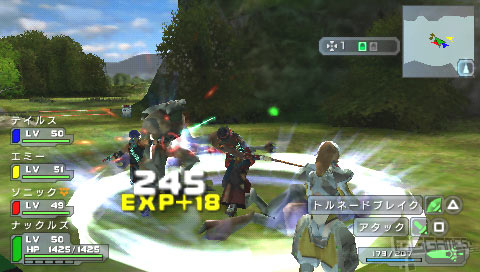
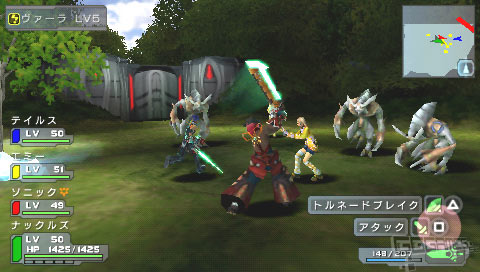
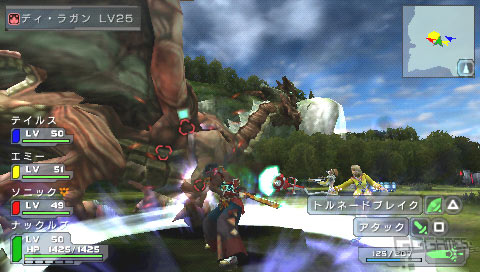
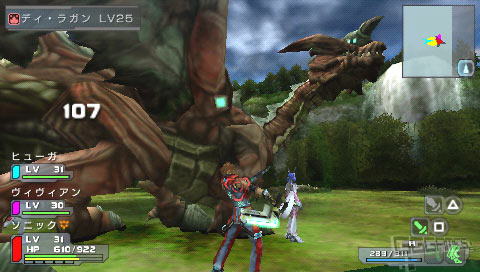
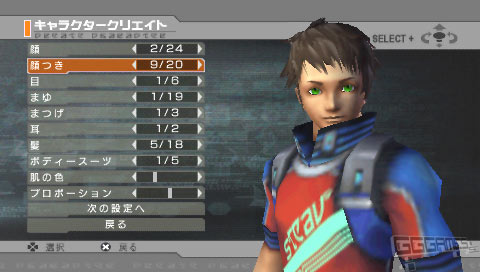
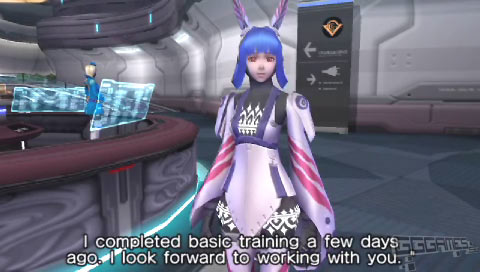
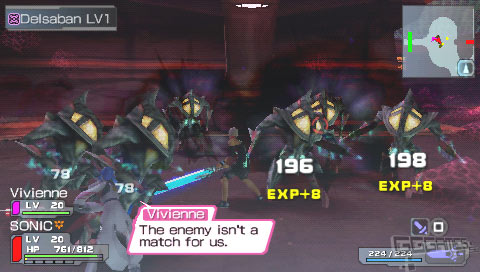
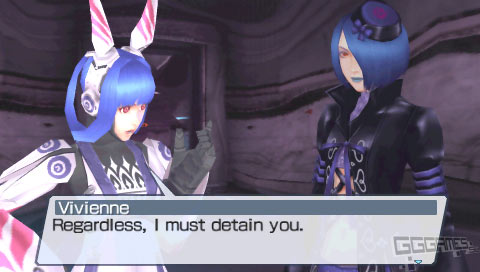
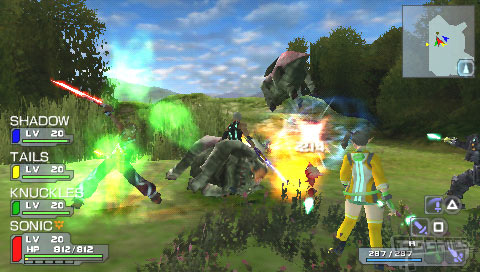
Developed By: Sonic Team
Published By: Sega
Version Reviewed: Playstation Portable
Genre: Action Roleplaying
Players: 1-4
Released: 2009-04-03
Related Posts
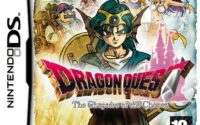
Dragon Quest IV: Chapters of the Chosen Review
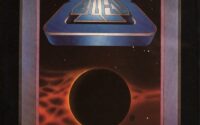
Alien 8 Review
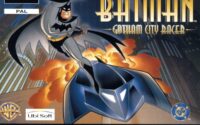
Batman: Gotham City Racer Review
About The Author
Mattias
Played my first video game in the 80's on the Commodore 64, and have been hooked since then. Loved the 16-bit era, the glossy magazines, and the colorful arcade games from that time.
